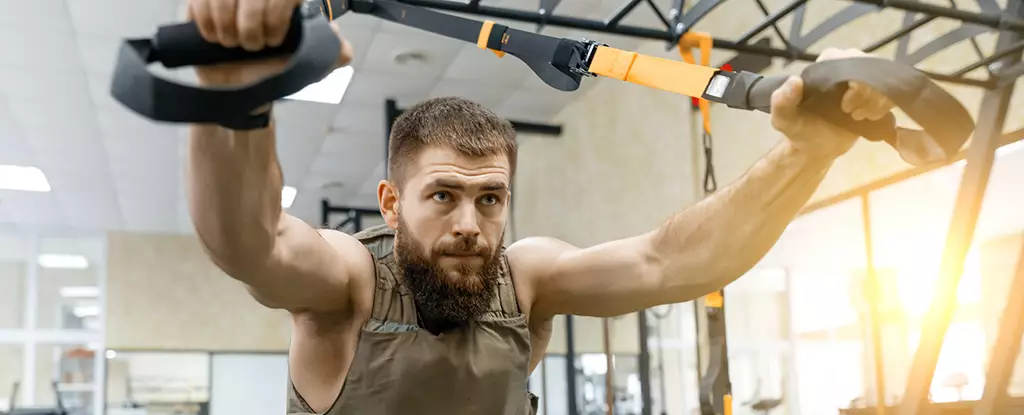Weighted vests are making a resurgence in the realm of fitness, drawing attention from social media influencers and personal trainers alike. This approach, while gaining modern traction, is far from a novel concept. Historically, soldiers have embraced the practice of traversing long distances with added weight, a method rooted in centuries of tradition. Today, with advancements in design and comfort, modern weighted vests are engineered for a more enjoyable workout experience. But do these versatile fitness tools have the potential to enhance your workout regime?
Research Insights into Weighted Vest Training
The quest to understand the efficacy of training with weighted vests has generated a plethora of research, tracing back to a foundational study in 1993. This study monitored 36 older adults over a 20-week period, revealing promising enhancements in bone health, pain reduction, and overall physical functioning. Such findings have paved the way for subsequent research, consistently illustrating that incorporating weight into exercise leads to increased physiological stress. As the body works harder during these workouts, metrics such as oxygen uptake, heart rate, and energy expenditure display noticeable hikes.
Interestingly, evidence suggests that adding 10% of one’s body weight to training could be advantageous. However, research has shown that an increase of just 5% in body weight does not significantly elevate the body’s workload, raising questions about its practical effectiveness. A 2021 study ventured further, indicating that additional weights might not markedly alter the biomechanics of walking or running. Moreover, this calls into question any potential injury risks associated with weighted workouts.
A biomechanical examination of treadmill running has brought to light the nuanced relationship between added weight and athletic performance. While participants faced enhanced physiological demands—evidenced by elevated heart rates and muscular forces—those involved in the study did not report negative impacts on their running mechanics. Remarkably, no substantial injuries tethered to the use of weighted vests have surfaced in recreational contexts.
However, caution should still be exercised; a 2018 clinical study on weight loss among individuals classified as obese identified back pain in 25% of the participants who donned weighted vests. Translating these findings to the average recreational user poses challenges, underscoring the importance of paying close attention to pain signals during any exercise regime.
Despite the claimed advantages, research remains somewhat inconclusive regarding the relationship between weighted vests and fat loss or muscle retention. One earlier study, which observed postmenopausal women with osteoporosis walking on treadmills, suggested a significant reduction in fat and an increase in muscle mass among those who wore weighted vests. Yet, follow-up studies involving older adults with obesity demonstrated no significant differences in fat loss, despite considerable hours spent wearing vests daily.
One of the ongoing areas of investigation is the effect of weighted vests on bone health. Past studies have shown promising results, with one from 2003 indicating notable improvements in bone density following 32 weeks of weighted vest activities among older women. Contrarily, a 2012 study produced conflicting results, suggesting no significant difference in bone metabolism among postmenopausal women utilizing vests versus those who did not.
For those contemplating the use of weighted vests, the pivotal understanding is that the risk of injury remains relatively low when proper training techniques and progressions are adhered to. Newcomers to exercise should prioritize establishing a solid foundation in strength and aerobic fitness before incorporating added weight into their routines. Utilizing one’s own body weight is often adequate for initiating fitness gains.
When transitioning to weighted training, starting with lighter weights—approximately 5% of total body mass—and gradually increasing to a maximum of 10% is recommended. It is essential to tailor the training approach according to the specific exercises being undertaken; for example, ground-impact workouts like running demand more careful progressions in load compared to strength-based movements like squats.
While weighted vests can serve an important role in enhancing workout intensity and energy expenditure, they are merely one of many tools available for fitness enthusiasts. Alternatives such as barbells, dumbbells, and resistance bands are often more straightforward and offer unique benefits in resistance training scenarios.
Although incorporating an additional 10% of body weight through a vest might seem like a quick way to amplify results, consistent training at higher intensities or longer durations can yield similar or superior outcomes. Notably, engaging in resistance training or high-impact exercises can also deliver substantial bone health benefits.
Ultimately, the strategy behind the use of weighted vests should encompass an understanding of one’s individual fitness level, pre-existing injuries, and a methodical approach to increasing intensity. Just as with any fitness tool, the key to effective training lies in informed application, progressive loading, and listening to one’s body.


Leave a Reply